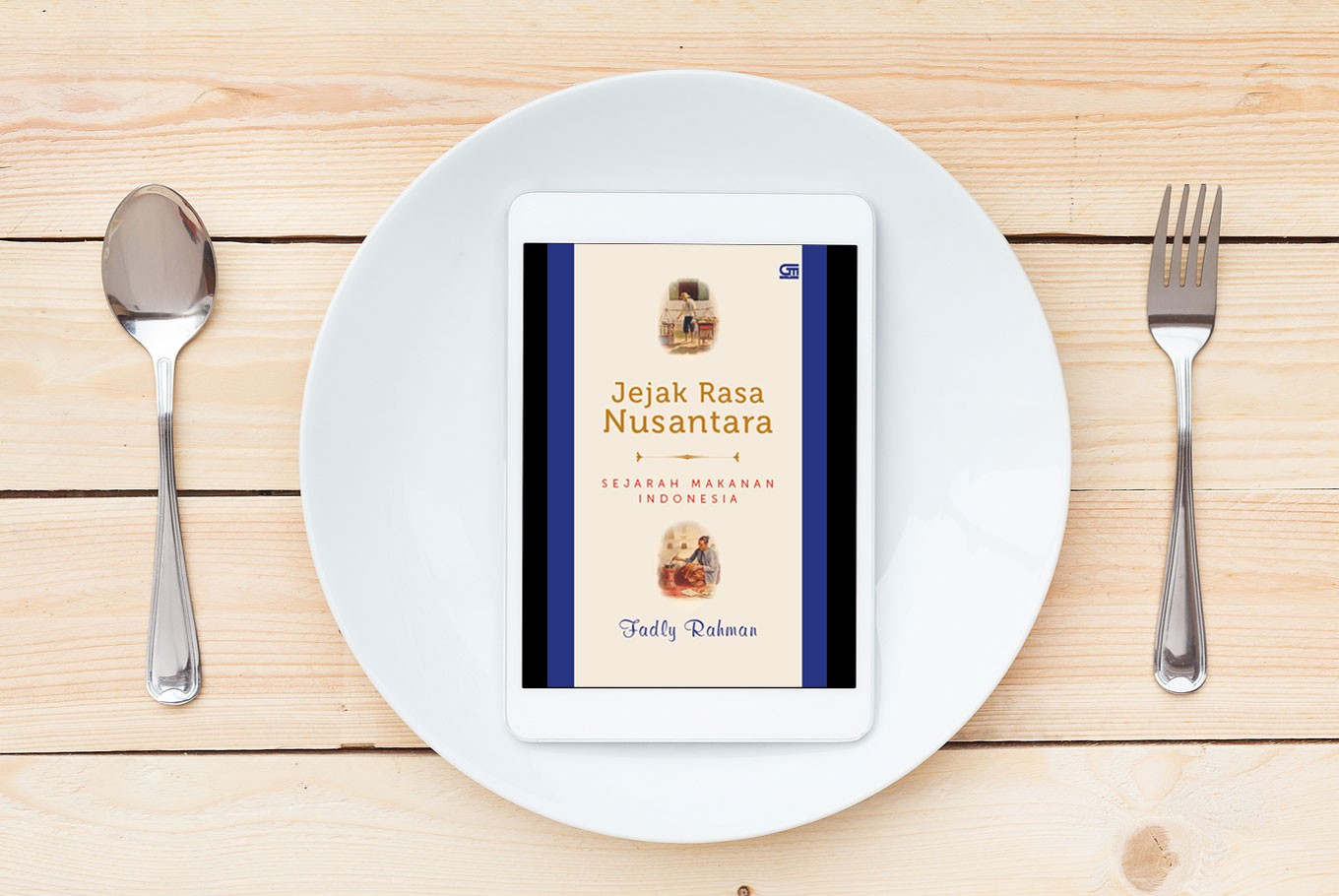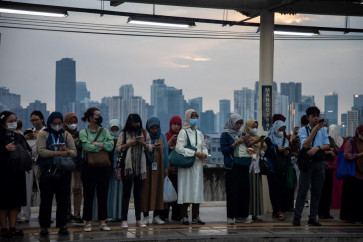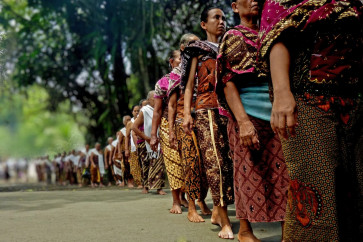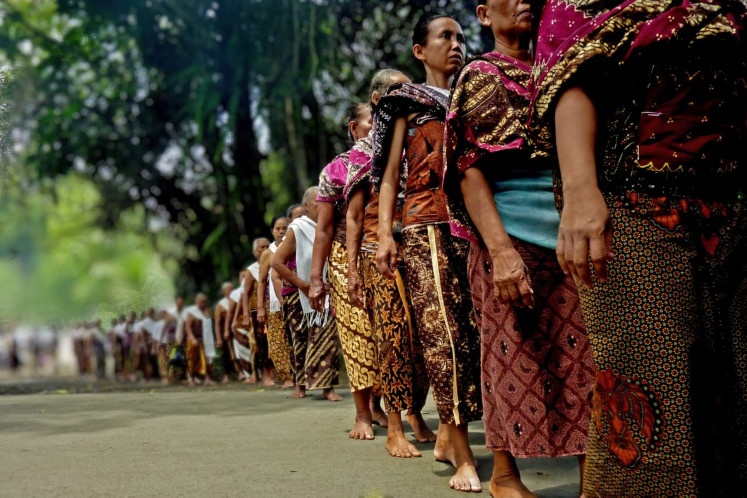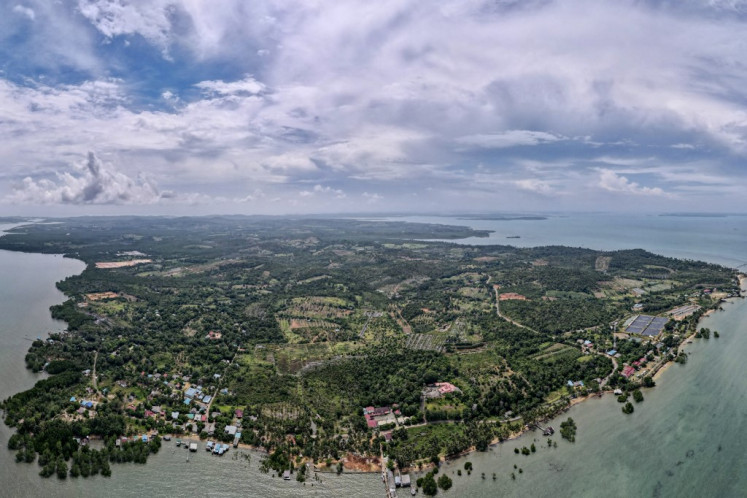Popular Reads
Top Results
Can't find what you're looking for?
View all search resultsPopular Reads
Top Results
Can't find what you're looking for?
View all search resultsTracing history of Indonesian culinary fare
Indonesia is heaven for delicious foods but many of the delicacies lie in a gray area, which a new book is trying to clear up.
Change text size
Gift Premium Articles
to Anyone
W
hen Manchester United soccer player Rio Ferdinand tried nasi goreng (fried rice) during a holiday to Singapore last year, he, like many others, shared his impression of the food on social media. He tweeted, “Nasi goreng lunch. Keeping it local in #Singapore.”
Shortly after, his tweet raised the eyebrows of Indonesian Twitter users. Using the hashtag #NasiGorengIndonesia, they told him that nasi goreng originated from Indonesia.
In a similar vein to the nasi goreng tweet incident, a group of Indonesians staged a rally in front of the Malaysian Embassy in Jakarta in 2015, protesting against Malaysia’s claim over lumpia (spring rolls). The protesters believed that the snack was part of the culinary heritage of Semarang, Central Java.
From the two cases, it seems that Indonesian people react emotionally when it comes to claims over the origins of food.
Read also: Djakarta Bali: A love story once unrequited
In his new book Jejak Rasa Nusantara: Sejarah Makanan Indonesia (Archipelago Flavor Trail: History of Indonesian Food), writer Fadly Rahman tries to shed some light on the issue from a historical perspective.
When asked about nasi goreng, the Padjajaran University lecturer explained that nasi goreng was actually inspired by a Middle Eastern dish called pilaf (rice cooked in seasoned broth).
“There is no historical evidence that proves that this [nasi goreng] is a native cuisine to Indonesia,” he said. Like nasi goreng, risotto in Italy and paella in Spain are also modified forms of pilaf. It is believed that the dish was introduced by Arabic traders in the past.
“Like other forms of technology, cuisine is easily imitated and transferred,” said British historian Felipe Fernández-Armesto, who was also cited in the book.
Therefore, the most important thing is to admit the originality of culinary heritage as well as to respect modifications that are invented by others later on.
For example, Italian people are not ashamed of admitting that pasta was adapted from Chinese noodles. Italian explorer Marco Polo reportedly brought the food to his home country in the 13th century.
However, Fadly believes that such an attitude is easier said than done, taking rendang ( beef simmered in coconut and spices) as an example.
Read also: A taste of the best rendang in Jakarta
The meat dish, which entered CNN’s World’s 50 Most Delicious Foods in 2011, is considered by Indonesians to be a signature food from Padang, West Sumatra. However, it turns out that neighboring Malaysia has a similar dish called kalio.
This similarity stirred up conflict during the 2015 World Expo Milan when both foods were promoted by Indonesia and Malaysia as part of their own culinary heritage.
Fadly believed that rendang and kalio were actually introduced by Portuguese people during the colonization period in the 16th century.
Portuguese people have a cooking method known as bafado, which involves slowly cooking ingredients, including meat and coconut milk, in a pot or frying pan over a low heat until all of the liquids evaporate, which can preserve the meat for weeks.
Read also: Where to enjoy different takes on delicious 'rendang'
During their colonial ventures, Portuguese people reportedly liked to use the bafado method to create packable meals. Bringing this stored food, the Portuguese visited West Sumatra through the Malacca Strait as well as Pahang in Malaysia.
“In Malaysia, kalio is wet, but rendang is dry,” said 35-year-old Fadly, who also wrote Rijsttafel: Budaya Kuliner di Indonesia Masa Kolonial (Culinary Culture in Indonesia during the Colonial Period).
According to Fadly, the word balado — describing the Minang style of sautéing chili in oil with other spices, such as onion and garlic — derives from bafado.
Other loanwords from Portuguese found on Indonesian menus are terigu (wheat), papaia for pepaya (papaya), manteiga for mentega ( butter) and queijo for keju (cheese). In his book, Fadly said Indonesian food was historically rich from harmonious interactions with Chinese, Indian, Arabic and European cultures.
“Unfortunately, many Indonesian people are yet to know about the history and culture of Indonesian food due to a lack of references about it,” said the writer, who took five years to complete the book. Fadly hoped his book would not only make Indonesian people prouder of local cuisine but also able to understand the concepts of “sharing cuisine” and “sharing flavors.”
Through such understanding, he hoped people would not react badly when learning that certain local dishes were shared by neighboring countries.
“Foods that people consume right now are mostly the result of cross-cultural interactions among people from many nations in the past,” he said.
So does Indonesia have its own authentic dishes? Fadly said yes, citing pecel (boiled vegetables with peanut sauce), gudeg ( jackfruit stew with palm sugar and coconut milk), papeda (sticky sago porridge) and rawon (dark beef soup) as examples.

